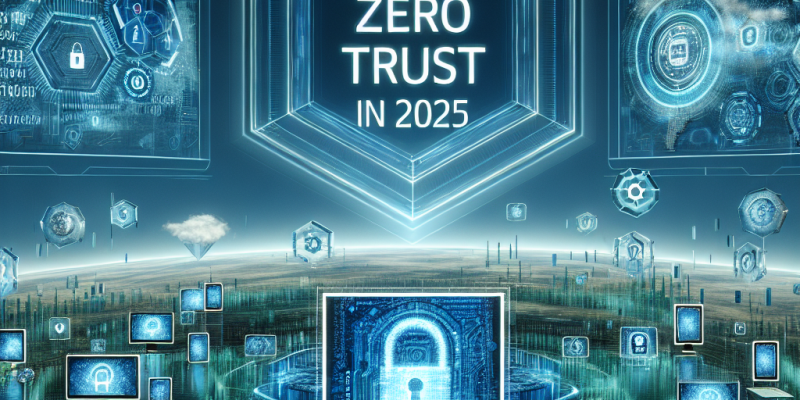Zero Trust in 2025: Navigating the Future of Cybersecurity

In 2025, the cybersecurity landscape has evolved significantly, with Zero Trust becoming a core strategy for organizations worldwide. This approach redefines how security is managed, emphasizing the principle of “never trust, always verify.” As cyber threats grow in complexity and scale, it’s crucial for businesses to understand and implement Zero Trust effectively.
What is Zero Trust?
Zero Trust is a cybersecurity model that assumes threats may exist both outside and inside the network. Unlike traditional security models that focus on perimeter defenses, Zero Trust emphasizes the need to verify every user and device, regardless of their location. This means that even users within the corporate network must authenticate themselves before accessing sensitive information.
The Rise of Zero Trust
By 2025, the adoption of Zero Trust architecture has soared. Organizations realize that relying solely on firewalls and VPNs is not enough. Cyber attacks, including ransomware and phishing scams, have become more advanced, making it essential to verify every access request.
Recent updates show that many businesses are now employing technologies such as multi-factor authentication (MFA), continuous monitoring, and segmentation of networks. These tools help ensure that even if a user’s credentials are compromised, attackers cannot easily access sensitive data.
Key Components of Zero Trust
-
Identity and Access Management (IAM): In 2025, IAM solutions have become robust. Organizations are using machine learning to analyze user behavior and detect anomalies. This way, if a user’s behavior changes suddenly, alerts can be triggered, and access can be restricted.
-
Micro-Segmentation: This involves dividing the network into smaller zones, making it harder for attackers to move laterally within the network. In 2025, more companies utilize micro-segmentation to protect their most sensitive data.
-
Data Encryption: Data is encrypted both in transit and at rest, ensuring that even if data is intercepted, it remains unreadable without the correct keys.
-
Continuous Monitoring: Organizations are continuously monitoring network activity for signs of suspicious behavior. This proactive approach helps in early detection of potential threats.
Challenges Ahead
Despite the advantages of Zero Trust, companies face challenges in its implementation. One major hurdle is the integration of legacy systems. Many organizations have older infrastructure that was not designed for Zero Trust principles, making it difficult to adopt this framework fully.
Additionally, the human factor remains a significant risk. Employees may become frustrated with strict access controls and may try to bypass them, creating potential vulnerabilities.
The Future of Zero Trust
Looking ahead, the Zero Trust model is expected to incorporate even more advanced technologies. Artificial Intelligence (AI) and automation are set to play a critical role in enhancing security measures. AI can help analyze vast amounts of data quickly, improving threat detection and response times.
Furthermore, as remote work continues to be a norm, Zero Trust will adapt to support a more distributed workforce. Organizations will need to ensure that users can access necessary resources securely from anywhere.
Conclusion
By 2025, Zero Trust is no longer just a buzzword but a necessity in the realm of cybersecurity. As organizations continue to face evolving cyber threats, adopting a Zero Trust framework will be essential for protecting sensitive data and maintaining trust with customers. The journey toward Zero Trust may be challenging, but the rewards of enhanced security and resilience are undeniable. In this future landscape, the mantra of “never trust, always verify” is more relevant than ever.














